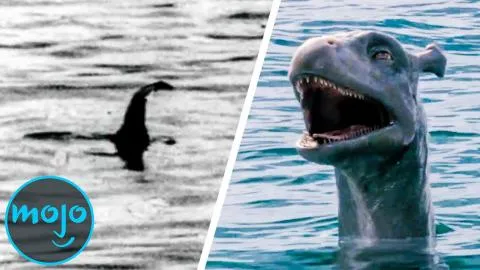The Mystery of the Loch Ness Monster Explained

The world has no shortage of cryptids. There’s Bigfoot, Chupacabras, Thunderbirds, the Kraken, and countless others in local folklore. But one stands out from the crowd as both the most elusive, and most photographed: the Loch Ness Monster.
Located southwest of Inverness in Scotland, Loch Ness is the largest body of water in the UK. Part of the reason there are so many Nessie sightings every year (real or imagined) is that the loch is such a popular attraction. People travel from far and wide hoping to glimpse the monster and prove its existence once and for all.
This buzz around Loch Ness is relatively recent, however. Before the 20th century, the mystery existed only as a local legend. The story goes that in the 6th century, Irish missionary Saint Columba encountered a dangerous “water beast” in the River Ness, which he warded away with the sign of the cross. The tale remained little known, however, until other sightings started to roll in during the 1930s. In the years 1933 and 1934, there were a handful of reported sightings, two of which involved Nessie crossing the road by the loch. The other two were of Nessie in the loch itself - and they had now-famous photographs to back up their claims.
The first was taken by a man named Hugh Gray as he walked his dog, and is extremely blurry; most people now agree that this picture was actually of his dog fetching a stick. The second was the “Surgeon’s photograph”, which popularized the image of Nessie having a long, protruding neck. Unfortunately, this picture, too, has been declared a hoax, reportedly made using wood putty and a toy submarine.
While there have been a lot of purported photos of Nessie since, most have been dismissed by experts as really showing birds, floating logs, unusual weather conditions, or pranks. Since the 1930s, Loch Ness’ murky waters have been investigated extensively by amateurs and professionals alike. Sonar investigations have picked up various anomalies, but remain inconclusive. In 2018, an international team performed a DNA survey of the loch that aims to create a profile of all life in the water - including the monster, if it exists.
So . . . what IS the Loch Ness Monster? Nessie is often depicted as a plesiosaur, an order of prehistoric marine reptiles. One popular theory hypothesizes that Loch Ness is home to a small population of plesiosaurs that somehow survived the extinction event that killed off the dinosaurs 66 million years ago. Or if not plesiosaurs, then animals that evolved from them. There are quite a few problems with this theory, however. Loch Ness doesn’t have enough food to sustain a breeding population of plesiosaurs, and since it isn’t directly connected to the North Sea, there isn’t anywhere else for these giant reptiles to go to dine out. There’s also the fact that the loch itself didn’t exist until 10,000 years ago after the last Ice Age. The truth is that if there was a whole family of plesiosaurs living in Loch Ness, we would certainly know about it by now. Living dinosaurs on Earth today would be one of the greatest discoveries in human history, and if anybody thought there was a chance of plesiosaurs being alive and well in rural Scotland, the best palaeontologists in the world would all flock to Loch Ness.
There are other, much more likely explanations for the mystery. The objects in many photos are probably birds, floating logs, waves, ripples, or just pure hoaxes. But there are also plenty of larger creatures living in the water that could be mistaken for monsters by people who don’t know what they’re looking at. One monster in particular, almost as elusive as Nessie itself, is the European sea sturgeon. While this large, critically endangered fish hasn’t been sighted in the loch, it does inhabit coastal waters connected to the loch via the River Ness. The biggest one ever discovered was 20 feet long –the same length as the largest Great White Sharks. While their average length is only 4 feet, that’s still pretty sizable. They can also live for one hundred years. Is it so hard to believe that one especially large sturgeon has been hiding in Loch Ness for decades? Well, if you believe that it might be a long-extinct plesiosaur, you can probably also believe that it might just be a big fish. A very big fish could account for shadowy shapes spotted from above, large ripples, and sonar readings. And where sturgeons might not be present, other fish certainly are, including pikes, trout, and salmon, all of which are relatively large and could be mistaken for something else.
Nessie isn’t the only sea monster in the world, however. Nessie isn’t even the only enormous lake monster that some people suspect to be a lost plesiosaur. People also say the same about Ogopogo, who lurks in Canada’s Lake Okanagan. Lake monsters, sea monsters, and sea serpents, appear frequently in folklore around the world, and go back to ancient times. The Book of Job has the enormous Leviathan, Ancient Egyptian legends have the chaos god Apep, and Norse mythology has the world serpent Jörmungandr. So, who knows? Maybe someone, somewhere, sometime has been onto something.
Unfortunately, it’s more likely than not that Nessie isn’t hiding beneath the surface of Loch Ness. If she was, we would have found her by now. But there’s nothing wrong with hoping anyway that maybe the naysayers are wrong, and the believers will be proven right.

